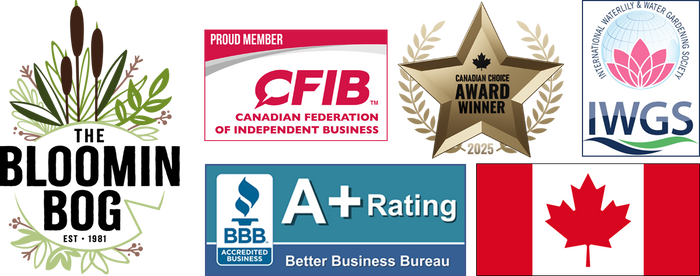Choosing the Right Sized Pond Pump
There are many factors to consider when selecting the pond pump size, including all sorts of pond information, and intended fish and plant stock. The calculations can be complex. Read on for a general guide.
Gather Some Basic Information
All measurements should be in feet.
- Pond volume (see calculation below) =
- Length of tubing =
- Tubing diameter =
- Height of waterfall =
- Width of waterfall =
- Thickness of water on the waterfall (trickle, sheet, Niagara) =
- Filtration method =
- Number of fittings =
What to do With all this Info
- The volume determines the minimum and maximum pump size (L x W x AvD = cubic feet. Multiply this by 6.9 (for an irregular pond shape; 7.48 for a square or rectangle; or 6.9 for a circle or oval = US gallons)
- The length of tubing is converted into lift (10ft of tubing equals 1ft lift)
- The tubing diameter must match the pump output flow rate
- The width of the waterfall and thickness of water determine desired flow rate
- The number of fittings are added to the lift calculation
An Example
Pond size is 8ft x 7ft x 2.5ft. Shape is irregular. Tubing length is 15ft. Tubing diameter could be 1-1/4” or 1-1/2in. Waterfall height is 3ft. The waterfall width is 12” and a sheet of water is required. There are two fittings; an adapter on the pump and one on the back of the spillway.
The Math Looks Like This
- Pond volume is 966 US gal. (Minimum pump size is 966gph; maximum pump size is 2,400gph)
- 15ft of tubing plus two fitting is the equivalent of a 2ft lift. Waterfall height is equivalent to a 3ft lift. Total Dynamic Head (TDH) equals 2ft + 3ft = 5ft
- A sheet of water requires 1,500gph/ft
- Pump size for this example is: 1,500gph at a 5ft lift (choices: an Atlantic TT2000; an Ecowave 3000; or an Aquaforce 1800
- Tubing size (as listed here) will be 1-1//4" or 1-1/2". Given the spillway has a 1-1/2" discharge, that's the recommended tubing size.
Pumps
There are no products in this collection.

